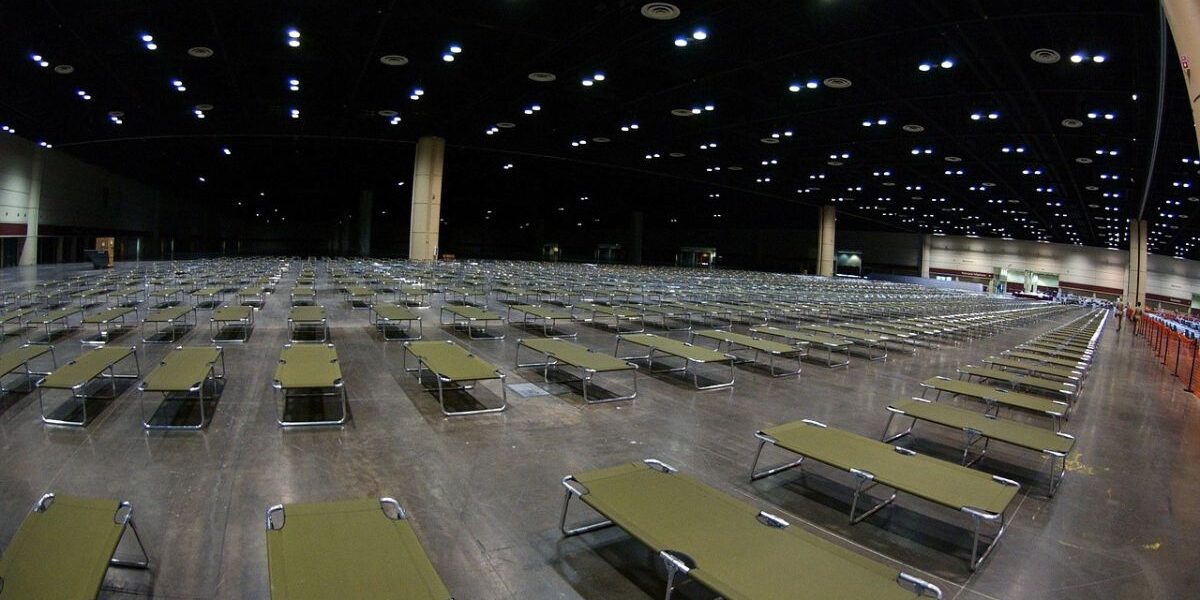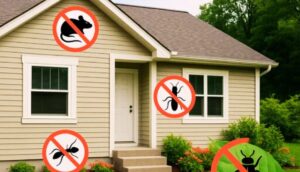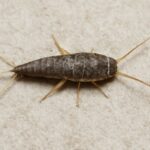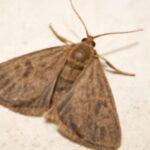A Simple Guide Everyone Needs
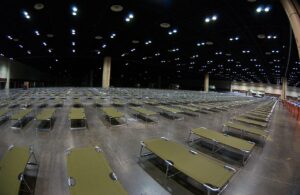
When disaster strikes and you find safety in a shelter, the last thing you want to deal with is bed bugs. Yet, these tiny pests can sneak in unnoticed and make a stressful situation even worse.
Whether you’re managing a shelter or staying in one temporarily, knowing how to check for bed bugs in shelters is essential. These pests spread fast and bite hard—often while you sleep. But don’t worry! With a few simple steps, you can spot bed bugs early and prevent an outbreak.
In this guide, we’ll show you exactly how to inspect shelter beds and sleeping areas, what signs to look for, and what to do if you find any bugs. Plus, we’ll answer the top 10 frequently asked questions about bed bugs in emergency shelters.
Let’s get into it.
As an Amazon Associate I earn from qualifying purchases
Why Bed Bugs Are a Serious Issue in Shelters
Emergency shelters are meant to be safe spaces. They offer warmth, comfort, and a place to rest when times get tough. However, these shared environments also create the perfect conditions for unwanted visitors—bed bugs.
These small pests are very annoying. They:
-
Thrive in areas where many people come and go
-
Travel unnoticed in clothes, backpacks, and bedding
-
Remain hidden until a major infestation has already started
The truth is, bed bugs don’t discriminate. They’re not attracted to dirt—they’re attracted to people. All they need is a quiet hiding spot and a warm body nearby.
Because shelters house many people in close quarters, infestations can grow quickly. That’s why knowing how to inspect for bed bugs in shelters is so important.
Your Easy Guide: How To Check For Bed Bugs In Shelters
Whether you’re staying in a shelter or working in one, these simple steps will help you catch bed bugs early before they become a bigger problem.
1. Check the Mattress or Cot First
Start where people sleep. Grab a flashlight and inspect:
-
The seams and stitching along the mattress edges
-
Beneath the mattress or sleeping mat
-
Around labels, tufts, buttons, or corner folds
Watch for tiny dark spots (bug droppings), pale eggs, or live bugs. Bed bugs are small but visible—about the size of an apple seed.
Helpful Tip: Always use disposable gloves during your check. Don’t lay down your bedding until the space is inspected.
2. Look Behind the Headboard and Along Wall Edges
If the bed is pushed against a wall or has a headboard, take a look behind it. Bed bugs like small, dark cracks. Also, check:
-
Baseboards and wall trim
-
The space between the wall and the bed frame
-
Fixtures like wall lamps, art frames, or outlets
Anywhere that offers a narrow gap could be hiding bugs.
3. Inspect Shared Furniture and Gear
Shelters that often provide shared items like couches, chairs and sleeping bags. These are also common places for bed bugs to hide. Inspect:
-
Cushions and folds in soft furniture
-
Zippers on sleeping bags
-
Inside seams and hidden corners of chairs or loungers
Even clean-looking gear can harbor bugs deep inside the fabric.
4. Know the Warning Signs
To detect bed bugs early, keep watch for:
-
Rust-colored stains from crushed bugs
-
Black dots the size of pepper (bug droppings)
-
Tiny white eggs or shed skins
-
Live bed bugs, are oval, flat, and reddish-brown
Pro Insight: Adult bed bugs are about 5–7 mm long. They scurry away quickly when exposed to light, so you may only get a brief glimpse.
5. Use Bed Bug Traps or Interceptors (If Available)
Some shelters install interceptor cups under bed legs. These trap crawling bugs and help monitor for signs of activity.
If you’re staying in a shelter long-term, ask staff if these are in place—or suggest using them as a preventive step.
6. Talk to Shelter Staff About Pest History
Don’t be shy about asking staff whether there have been recent bed bug issues. Well-managed shelters:
-
Keep track of pest complaints
-
Have a professional treatment plan in place
-
Appreciate when guests speak up early
Good communication helps everyone stay protected.
7. Keep Your Belongings Elevated and Sealed
Even if no bugs are visible, play it safe. Keep your items off the ground. Use:
-
Plastic bins with tight lids
-
Hanging storage or over-the-bed organizers
-
Luggage racks or plastic chairs
This limits the chances of bugs crawling into your clothes or bedding.
8. Use Travel Bed Bug Spray (Optional)
Carrying a small bottle of non-toxic bed bug spray can offer extra peace of mind. Just be sure it’s:
-
Safe for indoor and shared use
-
Labeled for use on fabrics or mattresses
-
Unscented or shelter-friendly
A light spray on sleeping areas or bags adds another layer of defense.
What To Do If You Discover Bed Bugs in a Shelter
Finding bed bugs in your space is frustrating, but there’s no need to panic. Here’s what to do:
1. Alert Shelter Staff Immediately
Quick action makes a big difference. Report the problem as soon as possible so they can investigate and treat the area.
2. Don’t Move Your Items Around
Avoid dragging your bed or bags to another part of the room. This could cause the bugs to spread to new areas.
3. Seal Your Belongings
Place your clothes and other items in sealable plastic bags or containers. This helps isolate potential bugs and makes treatment easier.
4. Request a Clean Sleeping Area
Shelters often have backup spaces for situations like this. Ask if you can be moved to a safe area while your original spot is treated.
5. Shower and Put On Fresh Clothes
Bed bugs may cling to clothing. If possible, wash yourself and change into clean clothes to avoid transferring them elsewhere.
Bed Bug Prevention Tips for Shelter Staff
If you’re part of a shelter management team, these tips can help prevent infestations and keep your guests safe:
-
Inspect sleeping areas regularly for signs of bed bugs
-
Wash bedding and linens using high heat (over 120°F)
-
Educate your team on how to spot early warning signs
-
Work with pest control experts for routine checks and emergency response
Proactive shelter maintenance makes it easier to protect your guests and avoid costly infestations later.
10 FAQs About Bed Bugs in Shelters
1. Can bed bugs spread disease?
No, bed bugs don’t transmit diseases. However, their bites can cause allergic reactions, itching, and anxiety.
2. How fast can a bed bug infestation spread?
Very fast. One female bed bug can lay 200–500 eggs in her lifetime. In a crowded shelter, an infestation can explode in just a few weeks.
3. What do bed bug bites look like?
They appear as small, red, itchy bumps—often in clusters or a line. They usually show up on your exposed skin, legs or arms.
4. Can bed bugs hide in clothes or shoes?
Yes. They often hide in seams, folds, and warm crevices like shoes or backpacks.
5. Are bed bugs visible to the naked eye?
Yes. Adult bed bugs are about 4–7 mm long ( have the appearance of an apple seed), flat, and reddish-brown. Nymphs are smaller and lighter in color.
6. Do bed bugs only live in dirty places?
No. Bed bugs don’t care about cleanliness. They only care about having access to people to feed on.
7. Can you get bed bugs from another person?
Not directly from skin contact, but you can pick them up from infested clothing, bags, or bedding.
8. Do shelters have to close for a time for bed bug treatment?
Not always. Pest control can often treat isolated areas while the shelter continues to operate safely.
9. How long can bed bugs survive without feeding?
Bed bugs can survive for several months without a meal, depending on the temperature and humidity.
10. What kills bed bugs instantly?
High heat (above 120°F) can kill all life stages. Professional-grade sprays, steam treatments, and encasements also help.
In Case you missed it here are other articles on Controlling Pest During a Hurricane
- Termite Control After Flooding
- How To Keep Bugs And Rodents Out After A Hurricane
- Best Mosquito Control Options After Flooding
- How To Prepare Coastal Property For Hurricane
- Pest-Proofing Homes For Hurricanes/Floods
✅ Bonus Tip:
Looking for effective bed bug sprays or travel protectors? Check out our top-rated bed bug prevention tools on Amazon – shelter-safe, affordable, and easy to use!
Final Thoughts: Stay Alert, Stay Safe
Bed bugs don’t belong in places of refuge. Whether you’re staying in a shelter or helping manage one, being aware is the first step to prevention.
You now know exactly how to check for bed bugs in shelters. Use this knowledge to protect yourself and others. Regular inspections, early detection, and good hygiene practices go a long way in keeping shelters clean, safe, and pest-free.
And remember—if you ever find signs of bed bugs, don’t panic. Act fast, report it, and follow the steps in this guide.
Want more emergency pest control tips?
Subscribe to our newsletter at BugOffControl.com and never miss an update!

